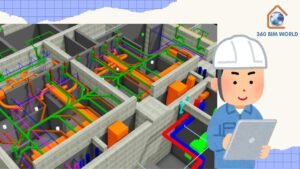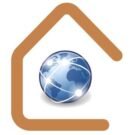What is a Green Building Design?
Green building, also known as sustainable building or eco-friendly building, refers to the practice of creating structures and using processes that are environmentally friendly and resource-efficient throughout a building’s life cycle. This encompasses the design, construction, operation, maintenance, renovation, and even demolition of the building. The primary goal of green building is to reduce the overall impact of the built environment on human health and the natural environment.
Key Features of Green Building:
- Energy Efficiency: Green buildings are designed to use energy more efficiently, often incorporating renewable energy sources such as solar panels and wind turbines. They employ advanced insulation, energy-efficient windows, and smart HVAC systems to minimize energy consumption.
- Water Conservation: These buildings utilize water-saving fixtures and systems, such as low-flow toilets, rainwater harvesting, and greywater recycling. Efficient landscape design, including drought-resistant plants, also helps reduce water usage.
- Sustainable Materials: Green buildings use materials that are recycled, renewable, or have a low environmental impact. This includes sustainably sourced wood, recycled metal, and non-toxic paints and finishes.
- Improved Indoor Air Quality: By using materials with low emissions and incorporating proper ventilation systems, green buildings ensure healthier indoor environments. This reduces the presence of pollutants and allergens, promoting better occupant health.
- Waste Reduction: During construction and operation, green buildings focus on reducing waste and promoting recycling. Construction waste management plans and the use of prefabricated components can significantly cut down on material waste.
- Sustainable Site Planning: Green buildings are often situated to take advantage of natural light and passive heating and cooling. They may also include green roofs, permeable pavements, and other features that support local ecosystems and reduce urban heat island effects.

Benefits of Green Building
- Environmental Benefits: Reduced greenhouse gas emissions, lower energy and water consumption, and decreased waste contribute to a healthier planet.
- Economic Benefits: Green buildings often have lower operating costs due to energy and water savings. They can also command higher property values and rental rates.
- Social Benefits: Improved indoor air quality, natural lighting, and thermal comfort enhance the health and well-being of occupants.
What is BIM?
Building Information Modeling (BIM) is a digital representation of the physical and functional characteristics of a building. BIM allows architects, engineers, and construction professionals to collaborate on a building’s design, construction, and operation.
How BIM Helps in Green Building Design
- Efficient Design Process: BIM provides a detailed 3D model of the building, allowing for better planning and visualization. This helps identify and solve potential issues early in the design process, saving time and resources.
- Energy Analysis: With BIM, you can perform energy simulations and analyze different design options to find the most energy-efficient solutions. This includes optimizing the building’s orientation, insulation, and HVAC systems.
- Material Optimization: BIM helps in selecting sustainable materials and reducing waste by accurately estimating the amount of materials needed. This ensures that only the necessary amount of resources is used, minimizing environmental impact.
- Water Management: BIM allows for the design of efficient water management systems, including rainwater harvesting, greywater recycling, and low-flow fixtures. These systems can be modeled and tested within the BIM software to ensure optimal performance.
- Lifecycle Analysis: BIM provides a comprehensive view of the building’s lifecycle, from construction to demolition. This helps in planning for long-term sustainability, maintenance, and eventual recycling of materials.
FAQs
Q: What is green building design? A: Green building design focuses on creating environmentally responsible and resource-efficient structures throughout their life cycle.
Q: Why is BIM important in green building design? A: BIM helps in efficient design, energy analysis, material optimization, water management, and lifecycle analysis, all of which contribute to sustainable building practices.
Q: How does BIM improve energy efficiency in buildings? A: BIM allows for energy simulations and analysis, helping to optimize building orientation, insulation, and HVAC systems for maximum energy efficiency.
Q: Can BIM help reduce construction waste? A: Yes, BIM accurately estimates material requirements, reducing waste and ensuring that only the necessary resources are used.
Q: How does BIM support water conservation? A: BIM enables the design and testing of efficient water management systems, including rainwater harvesting and greywater recycling.
Q: What are the long-term benefits of using BIM in green building design? A: BIM provides a comprehensive view of the building’s lifecycle, aiding in long-term sustainability, maintenance, and material recycling planning.
Conclusion
Green building design is essential for creating sustainable and environmentally friendly structures. By integrating BIM into the design process, architects and construction professionals can enhance the efficiency, sustainability, and overall performance of green buildings. Embracing BIM in green building design not only benefits the environment but also leads to cost savings and healthier living spaces for occupants.

Pingback: "COBie Explained: Transforming Facility Management for the Future in 2024"